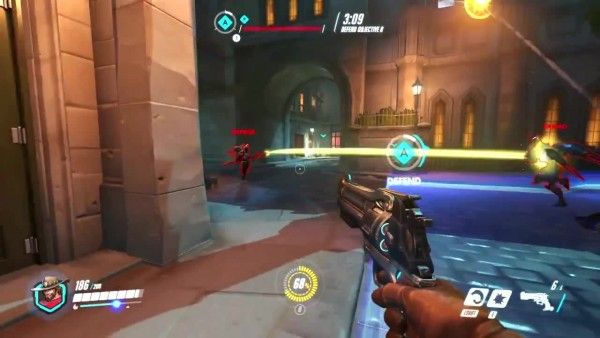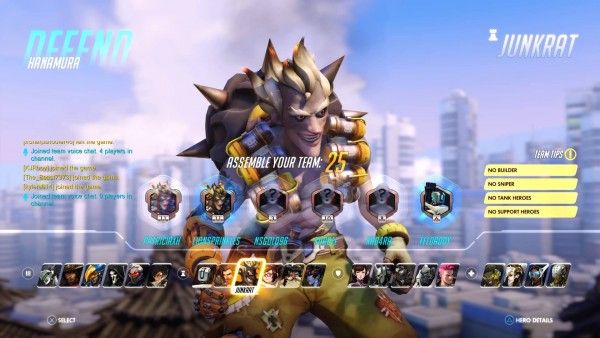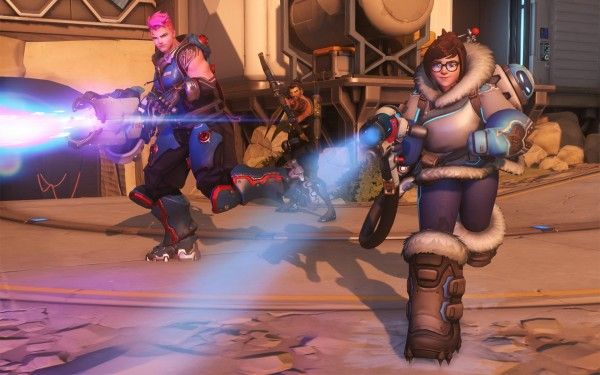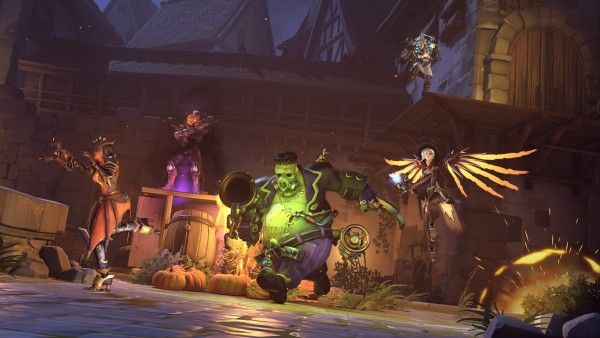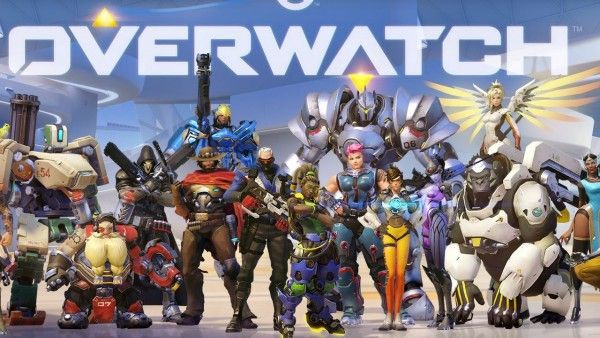The world of video gaming is chock-full of flashy new titles every few weeks, working to grab your attention. It’s hard to suss out which games are worth the purchase, especially considering these things don’t come cheap. You have to consider replayability, how much bang you’re gonna get for your buck, if you’ll like the story, or even if you’ll like the gameplay. Even then, there are so many games available there’s not enough time to play every single one (well there is, but then you’d have time for almost literally nothing else). But I’m here to make the case for one game that’s been on the shelves for a bit, but one which I feel quite confident in saying is one of the best video game investments ever: Overwatch.
From publisher and developer Blizzard Entertainment, Overwatch is a team-based multiplayer first-person shooter game, but one in which character is everything. The elevator pitch is this: it’s a multiplayer shooter that never, ever, ever gets old thanks to frequent updates, new game modes, new maps, new skins, and yes, brand new heroes. The game is constantly adding new features, so your $59.99 goes an extremely long way—it feels like you get four or five different games a year for the price of one.
Gameplay
So what is Overwatch and how does it work? As the categorization suggests, it’s an online-only game in which you are matched up with various other players and put on a team, at which point you go up against another team in a variety of different game modes. The two most prominent are A. Payload-based—in which one team attempts to escort a payload across a map and the other tries to stop them—and B. Capture-based—in which one team tries to capture a point (or multiple points) that another team is defending.
This is a first-person shooter, but Overwatch differs from other multiplayer first-person shooters in that you choose from an incredibly diverse group of heroes, and you make your choices based on the characters the rest of your team chooses. If your team isn’t balanced—if you go out there with no healer, too many heroes with low health, or too many heroes with low damage-per-second, your chances of winning are more slim. Teamwork is not an option, it’s a pre-requisite to succeeding, and that makes the game a lot of fun.
There’s a Competitive Play mode, which rolls out in seasons. When a season is in progress, you can go into Competitive Play and you’re paired up with other players of similar stature and standing—this ensures you’re not getting killed every time you go out there. In Competitive Play, you work towards an ultimate point total—if you lose a game, your point total goes down. If you win a game, your point total goes up.
There’s also an Arcade Mode, which houses a variety of different ways of playing the game. There’s a 1v1 Deathmatch mode, there’s a 1v1 duel mode, there’s a 3v3 elimination mode in which if you die, you don’t come back. The Arcade is also where you’ll find all kinds of crazy game modes: Mystery Heroes has you respawn as a random hero each time, and of course there’s also whatever seasonal game is happening at any given moment (I’ll get to that in a bit).
The game is available for Xbox One, PS4, and PC, however as of right now there is no cross-platform play—so you can only play with those who share the same console as you.
The Characters
The characters are also extremely diverse. There are four main types of Overwatch characters: Offense, Defense, Tank, and Support. But within these groups are very different kinds of heroes. Support can be either a straight-up healer like Mercy or someone like Symmetra, who can place damaging turrets in a location that can set a trap. Defense heroes can be Bastion, a combat robot who’s essentially a walking Gatling gun, or Hanzo, an archer with a sharp eye for sniping.
The diversity of the heroes allows you to play Overwatch a variety of ways, working to improve your skill with all kinds of different characters. But what really makes the characters of Overwatch special is the care with which they were created by the Blizzard team. Each character has an extensive backstory, filled out by comics and animated short films, and their abilities, powers, and designs are all derived from those backstories. Sombra is a stylish Mexican hacker; Pharah is an Egyptian security officer equipped with a rocket launcher; Mei is a Chinese climatologist and adventurer whose playful attitude makes her an especially savage opponent; And Moira is an Irish geneticist whose concoctions work to heal or damage players.
The Overwatch lineup is diverse in gender, country of origin, and even sexual orientation—an Overwatch comic revealed that British pilot Tracer is a lesbian. The team also makes sure only to cast voice actors for these roles who are actually from the character’s real country of origin.
The Story
Yes, there’s a story! The Overwatch team at Blizzard has an entire story department devoted to filling out the backstory of the characters and world, which only makes the game that much richer. You won’t see any of this as a playable campaign or anything, but it directly informs the extremely diverse set of maps, the heroes, and their wide array of skins.
The backstory, as revealed through animated shorts on YouTube and other venues, is pretty deep. Overwatch takes place in the wake of a massive worldwide crisis. Following a golden age of technological prosperity, in which artificially intelligent robots known as Omnics were produced that helped achieve economic equality, facilities created lethal, hostile robots which turned against human kind. The “Omnic Crisis” arose, and with it the U.N. formed “Overwatch,” a team of heroes tasked with quelling the robotic uprising.
But after the robot uprising was squashed, infighting led to a rift between the two heads of Overwatch—Gabriel Reyes and Jack Morrison—and the U.N. began an investigation, during which Overwatch’s headquarters was destroyed by a bombing. The U.N. subsequently dismantled Overwatch and forbade any such activity.
The world of the Overwatch game is set years after Overwatch was officially disbanded, during which a second Omnic Crisis is beginning in Russia and certain members have decided to reform the heroic team.
Again, none of this story is playable as a campaign, but the history and actions all inform the intensely detailed maps and characters. Moreover, when the Blizzard team releases a new animated short online, fans are thrilled to learn more about the story behind these colorful characters.
The Updates!
All of the above makes Overwatch a rich and satisfying game in and of itself, but it’s Blizzard’s dedication to keeping the game fresh that makes it one of the best video game investments around. There are seasonal events that occur every couple of months, during which a brand new game mode is introduced, new skins, emotes, and sprays are unlockable, and some of the maps get reskinned to fit the theme.
There have now been two Halloween themed events, both of which were jubilantly frightful and basically set Overwatch to “Spooky Mode.” There have also been two Winter Wonderland events, a Year of the Rooster event celebrating the Chinese New Year, an Anniversary event celebrating the first anniversary of the game, and it all began with a Summer Games event tied to the 2016 Summer Olympics.
As an example, for the Summer Games the Overwatch team introduced an Arcade Mode called “Copa Lucioball,” in which you played as one of the characters Lucio in a 3v3 match of soccer. These seasonal events offer something new to do, and since they’re timed events that don’t last forever, there’s a thrill in trying to unlock all the skins and emotes you want in the short amount of time (this can also lead to intense frustration, but you always hope for the best).
In addition to seasonal events, Overwatch has also introduced five new characters in its first year and a half of release. There are more on the way, which means even if you have mastered all 26 playable characters, there’s always the promise of new avenues to go down with this game.
So if you’ve heard about Overwatch and have been on the fence about whether it’s worth the purchase, or if you just want to make sure you buy a game that gets you a lot of playtime for the investment, you really can’t go wrong with this one. Take it from me—I bought this game last summer and haven’t been able to put it down since.


